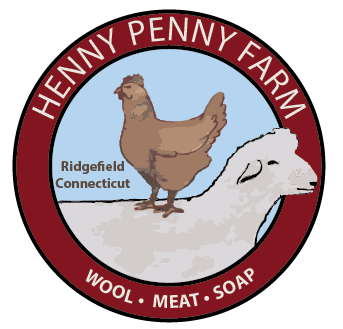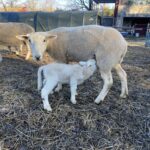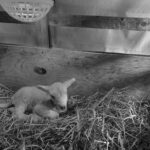I constantly work to close the loop on our farm and to make it sustain itself. The less we have to buy and bring onto the farm the more beneficial it is for my wallet and the environment. No manufacturing and trucking of fertilizers and honestly, the fertilizers produced by the animals is about as good as it gets, anyway! Not only is their manure high in N,P,K but also builds soil structure, moisture retention and biological activity with all of the organic matter..
We use our manure in different ways depending on the time of year and from which animal it came. The main thing to be aware of when using manure is the concern for the presence of E.coli when the manure is not thoroughly rotted down. Our sheep manure is aged at least 6 months and the chicken manure is in a hot compost pile that is actively turned to accelerate the rate of decomposition. Also, a general rule of thumb is not to use the manure of meat-eaters (so no lion manure from your zookeeper friend!) as their parasites could be transferred to humans. I could use the sheep manure to make the tea but since I want to make the most efficient use of all 7 compost bins we have going on the property, so this blog is about the system that works best on our farm for now.

The sheep manure isn’t ‘hot’ like chicken poop and won’t burn the plants so we use the manure/bedding mix that is mostly decomposed from the Autumn as a thick mulch on the flower beds or berry crops in the spring and also mix it into the soil in new garden beds.
The chicken manure goes into the general garden and household waste piles for thorough decomposition and then the resulting black, friable, goodness is used to make compost tea. While it may seem overwhelming to make compost tea, it is really very simple for general home use.

I take a 5 gallon bucket and fill it halfway with compost. You could use an organic planting soil if you don’t have a compost pile; I say organic because you want a lot of biological diversity in this starting compost as your tea is only as good as your starting ingredients. I let the soil solution ferment for 2-3 days in the presence of oxygen and molasses (sugar and minerals provide nutrients for all those wonderful microbes you are trying to encourage to multiply). There are certainly nutrients in the tea but the big benefit is in the multitude and variety of life. To supply the oxygen, I use a fish tank pump for a 10 gallon tank and a gang valve split to two or four airstones. (Note: we put our spring-fed well water directly into the bucket. If you are on city water you’ll want to run the bubblers in the water first for 45 minutes to get rid of chlorine present in the treated water.) During the few days of fermentation, every time I pass by (so a few times a day) I also give the bucket a vigorous stir with a paint stirrer to make sure oxygen and nutrients are circulating evenly. If by day three I am not ready to use the tea I could eek out one more day if I give another boost of molasses. Then, to use, turn off the pump and let the soil settle out for about 20 minutes. Then I filter the mixture through an old pillowcase into another bucket.

The tea is then ready to use directly watered into the soil or as a foliar spray. Sprayed on the leaves it helps increase the biological defenses on the leaves against fungal and bacterial diseases. The microbes in the soil fix nitrogen and help with water and nutrient retention. No matter how you use it, the tea provides nutrients to the plant in a biologically available form and supports overall plant vigor.
I should point out that this is a very crude way of creating compost tea. If you really get into it or just want to further your knowledge, Dr Elaine Ingham has been one of the pioneers of this research on the microbes present on plants and in the soil and their influence on overall plant health. Her website has extensive information on making, using and analyzing teas.

Like all good organic gardening, you won’t see instant results but you will go out your door one morning and think “Boy, the garden is looking good!”.






